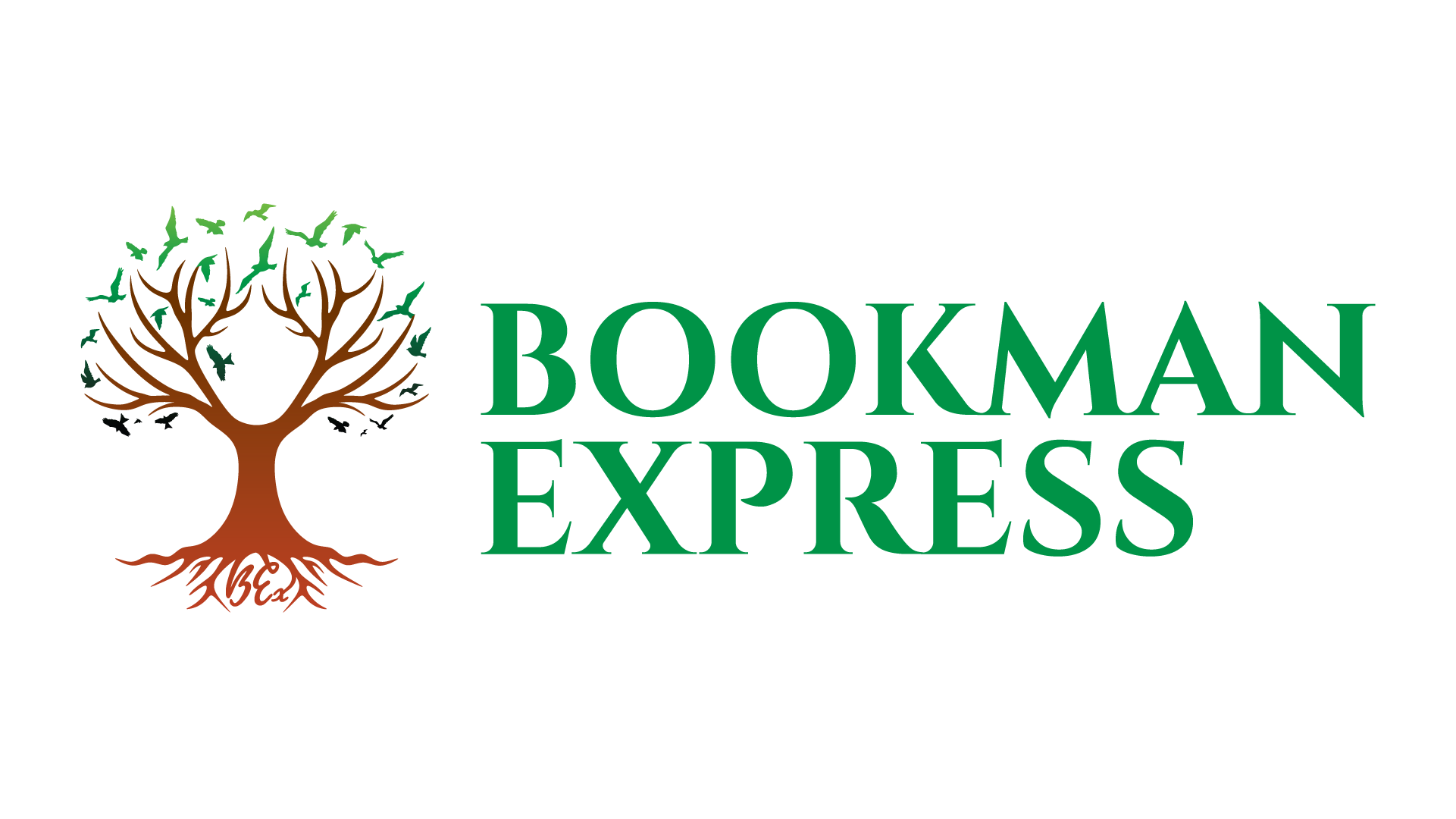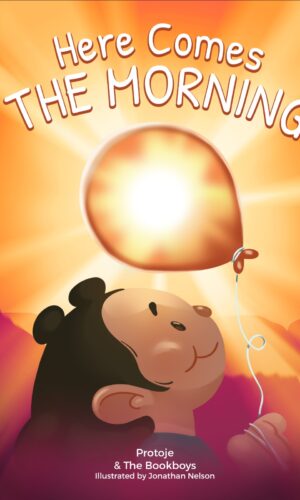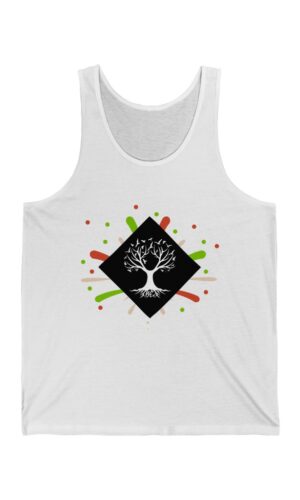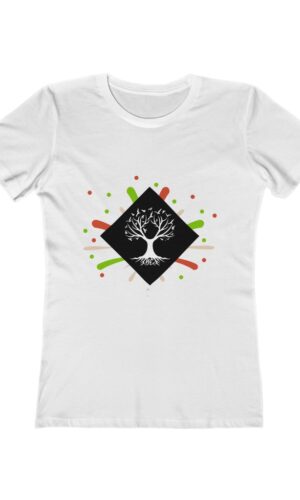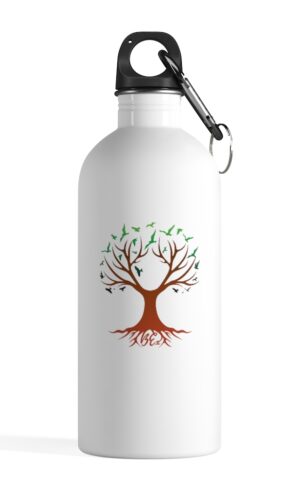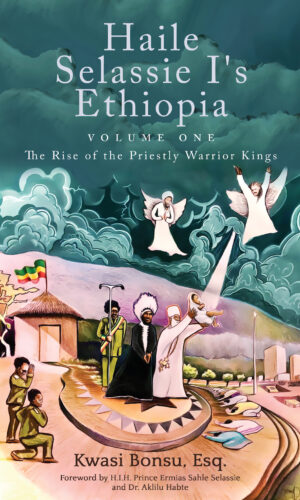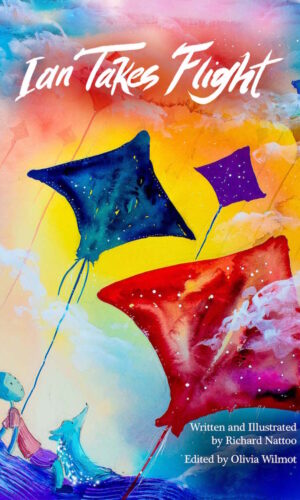Kwasi Osei Bonsu, Esq. is a born Jamaican who was raised in Canada. Although his grades during his formative school days are unknown to us, we do know that he has all A’s, quite literally, in his professional life today. He is an attorney, an artist and also a self-proclaimed “actionist.” Then, at the dawn of 2022, he added another A to his repertoire when he became an author, published proudly by Bookman Express.
Bonsu, also known as Dejazmatch Kwasi, is a devotee of H.I.M. Emperor Haile Selassie I, and he is well known for his part in building and strengthening multiple institutions within the global RasTafari community. He was integral to the development of the Nyabinghi House in Washington DC, the non-profit Iniversal Development of Rastafari (IDOR), HABESHA Inc. (whose founder, Cashawn Myers, we featured before on this blog), and countless other initiatives and organizations up to the recent establishment of the Association of RasTafari Creatives (ARC), which he convened shortly after the COVID-19 outbreak.
The global lockdown allowed Bonsu some extra time to complete a manuscript that was close to two decades in the making. Finally, he brought Haile Selassie I’s Ethiopia, Volume One: The Rise of the Priestly Warrior Kings to our publishing company and we happily released it to the world. Believe it or not, the book is one of a very few comprehensive, seriously researched works on Ethiopian history written by a non-European! Aside from Ethiopian intellectuals who have delved sufficiently into their own history, there have not been many people of African descent who have cared to dig as deeply into that nation’s historical politics, culture, religion and tribal distinctions as Kwasi Bonsu, Esq. What is even more remarkable is that he may be the first RasTafari person to produce a book of such depth and scope about the geographical Zion that is embraced by most, if not all persons of the faith. We reasoned with him about his life, work and motivations related this remarkable first volume (of seven).
What is your background and upbringing?
I was born Kwasi Osei Bonsu Clarke, to Paul and Norma Clarke – Paul Clarke being of Clarendonian (Clarendon, Jamaica) descent, my mother being born in Trelawny. I, myself, was born at the University of the West Indies, Mona campus. I grew up in Toronto, Canada, and went to university and law school in Washington DC, where I’ve lived the majority of my life. I embraced Ras Tafari while an undergraduate at Howard University, and it is also here that the genesis of this work began, and the interest that was kindled in learning about His Imperial Majesty, Emperor Haile Selassie I. In reference to works on a global scale, I’ve been a front line soldier from the day that I embraced Ras Tafari until this time. A lot of my worldview was shaped during that university period. That’s when I became a man. To this day, I still draw from those experiences.
Why is it significant for young men to experience that transformative, coming of age period of life?
What it meant for me is recognizing responsibility. I think that critical to manhood is that responsibility, and recognizing that with great power comes great responsibility. So we claim headship. The government is on his shoulder is a phrase we love to use in RasTafari. As young boys, we are into experiences, partying, having a good time, that kinda thing is what you chase. When you come into your manhood, you really recognize, I have a responsibility not just to myself and to my family but to my people and to the legacy when I leave this plane of reality. What will be said?
For myself, it was also recognizing that the Almighty was real, because I didn’t even have that consciousness really as a youth coming up. I grew up in a house that was more geared towards the social revolutionary side of pan-African thought. Pan-African socialism. My father was big into Kwame Nkrumah. He wasn’t on the spiritual side at all. So, it was coming into the recognition that we are instruments of the Almighty and that the Almighty is real and, if that’s the case, then how are you going to be utilized as a tool of that Creator? My idea of manhood is tied to spirituality and the concept that man of right is God in flesh as Prince Emmanuel Charles Edwards would put it.
You chose a very compelling subtitle for your book. What exactly is a priestly warrior king?
The subtitle describes the archetype of Ethiopian leadership during the period of His Majesty’s reign. These kings had all the training that they could have easily been priests in terms of their knowledge and how they navigated around religious doctrine – their passion and zeal for their faith, in this case the Orthodox Christianity. Some were trained by monks or raised in monasteries. But then, also, these were all bredrins who fought on the battlefield as warriors. They took lives and fought at the head of their armies. We talk about Emperor Tewodros II, who was famous because he would live like his soldiers, almost like a Robin Hood type of figure. He kept that respect late into his reign because he fought on the battlefield. This was the archetype. And when we trace it back to even King David in the Bible, this was the same type of character. He danced in front of the Ark of the Covenant. The Psalms of David is part of the holy book today and even part of the Ethiopian liturgy. David was a warrior who shed blood and also sat on the throne as a king. So, I wanted to explore what this archetype means. Then, eventually in this series, we will show that Haile Selassie I was the greatest priestly warrior king in the history of humanity. This subtitle introduces the concept but it is a concept that is going to play out as we continue to tell this story.
Do you want to share a preview of how H.I.M. Emperor Haile Selassie I exemplified the priestly warrior king archetype?
Yes. His Majesty, from he was a young child, was trained in Ge’ez and Amharic, and served in the church. He made a lot of reforms. When we say that he is the greatest, people who are students of history will know that Ethiopia was under the See of Alexandria. Saint Mark, who authored the Book of Mark in the New Testament, went down into Egypt and established the Orthodox Church, converting the gnostic priests of the Egyptian Pharaonic religion into Coptic priests of Orthodox Christianity. They really were the central church in Africa, and the Ethiopian Archbishops were consecrated from Cairo and then sent to Ethiopia to administer over the flock. So, many times throughout Ethiopia’s history, they had problems because they couldn’t get an Archbishop from Egypt. One of the things that His Majesty did was that he went to Egypt and sat down with the Archbishop and was able to negotiate the independence of the Ethiopian church, whereby Ethiopia could appoint its own Archbishop. This just shows you the breadth of his biblical training and recall, that he could sit with the highest priest, and actually make that change through his word, sound and power, securing for Ethiopia that autonomy.
Game of Thrones was the most viewed television series on the planet… we can draw parallels with what actually happened in Ethiopia! Minus the dragons! But instead of dragons, the beautiful thing about Ethiopia is that we have lions! Many of the kings actually had lions in their courts.
As Marlon James has done in promoting his Dark Star fantasy fiction trilogy, you have also compared your non-fiction series-in-the-making to the popular ‘Game of Thrones’ series. Why are you forging this connection in the minds of potential readers?
Because history is oftentimes thought of as very dry and detached and not interesting. We’re also fighting a culture where reading books has become an outlier behavior. Most of the reading is done on screen. So, to really get people to read as a storyteller, we have to entice them with character arcs and narratives that are often exemplified in fiction or fantasy works. Game of Thrones was the most viewed television series on the planet, and when we look at the intrigue of the different kingdoms and houses, we can draw parallels with what actually happened in Ethiopia! Minus the dragons! But instead of dragons, the beautiful thing about Ethiopia is that we have lions! Many of the kings actually had lions in their courts. If you watch the making of the film Coming To America on the DVD, the Jewish writers say that the inspiration for Zamunda and having the elephants and all these things walking through the garden was because they saw what was going on in the palace of Haile Selassie I. His Majesty famously had a lion named Togo that sometimes used to be off leash, and you go down the wrong hall in the palace and you buck up in a lion! A lot of the diplomats were petrified because they would come and have an audience with His Majesty and Togo might be sitting at his foot, you know. So the reality of Ethiopia has that same kind of mystic allure.
And then the kingdoms. The title of King of Kings that was held by the Emperors was not just a title. There were actually different kingdoms and kings who reigned in their own right. They always had to give fealty and bow before the king of all kings. You read about this in books about the Middle Ages or fantasy books, but this was actually happening in Ethiopia and we actually have pictures that came right up into our modern era, a window into a distant past. But it was a mystical past.
Even in the writing style, instead of talking about the famine that took place and killed an estimated one-third of all Ethiopians, we talk about the Angel of Death being upon the land. We talk about the Lord of the Flies because there were swarms of tsetse flies and plagues that took the people. So, you can also say those scientific facts while adding that writing flair.
Being a RasTafari, how did you find the experience of uncovering the facts of recorded history concerning Ethiopia at the time of Haile Selassie I’s birth (as Lij Tafari) in 1892 and beyond?
The history was what shifted I man from being agnostic to being a man of great faith. It wasn’t the biblical account. It was the literal history that made me change my life. So, you can imagine the impact of learning these things. One or two facts could be a coincidence but remember, in 1892, the victory over the Italian invasion – the largest invasion on the African continent – did not yet happen. That did not have to happen. That did not have to go well. The unification of the African continent in that same capital that was liberated by His Majesty and his efforts didn’t have to happen. Africa Hall didn’t have to be built. The arming and training of the African liberation movements, the building of schools, unprecedented spread of education, the rise of the RasTafari movement globally – all of these things were not assured in 1892. So, the fact that you know that these things have happened, and then you’re reading back to that moment, and then you’re seeing all of the things that correlate around it – his birth after the drought, coinciding with the rains and the replenishing of the Earth and what that represents on a cosmic or mystical scale. Addis Ababa, the “new flower,” was founded by Empress Taitu and established in 1892, the year he was born. The new flower, the new Jerusalem, you know. The new capital, the new beginning.
Again, none of that was assured at the time but when you connect all of the dots, the impact that it had on myself as a young man was that it changed my life up to this time. I’m still relishing in the glory and this is why I wanted to write the book to share it. I always say that I wrote the book that I wanted to read as a young Ras.
In a world where a dreadlocked RasTafari is typically called a “Ras,” why do you encourage people to address you as “Dejazmatch,” which, as you shared in your book’s glossary, is actually a lower Ethiopian military rank?
I want to live by example. We are the children of Ras Tafari and we are called by his name. I was given the title, Ras, by my elders at the Washington DC Nyahbinghi house and I am thankful and honored. But what I researched was that there were stages. His Majesty was born as Lij. At 13 years of age, he became Dejazmatch. And then he went to Ras. I wanted to live the fullness of the experience in reality. When His Majesty took the title of Ras, he was governing all of Ethiopia. We have to start setting some examples in the movement and, for me to really advocate that among my peers, I would have to live it. It’s harder to advocate for something if you yourself have not lived through it.
I definitely do plan to reclaim the title of Ras but I wanted to take some time to really dwell within the irits of Dejazmatch – “commander of the gate” or “keeper of the door” – and really explore the fullness of that sound and vibration. I find myself in this period of life where we are connecting a lot of dots, and we’re building institutions that foster connection. I’m leaning into that role in which I think every RasTafari bredrin should dwell. Eventually, we would like to establish a rites of passage process for youths to go from Lij, then they go through the period of Dejazmatch, then they are given the title of Ras. So, when I meet a man in the street and his name is Ras, I know that he is of a certain standard and quality.
In the tradition of ancient Ethiopia, these titles are seldomly granted. They are bestowed by the Crown Council of Ethiopia , whose head, Prince Ermias, wrote one of the book’s forewords. I consider him a bredrin even as I hold him in that high esteem. Although we have that connection, my title is not an official title. He did not give me that title. These are honorific titles that are granted within the movement. As we evolve as a nation of RasTafari, we have to set our own standards and ways to codify and institutionalize the culture, so that the culture can continue to grow and have impact. That is why I took the name Dejazmatch.
We really have to look at the Ethiopian story, which gives us that conquering part of us that we need.
In many of your interviews so far, you have stressed that the story of Ethiopia has been the missing piece in the wider pan-African puzzle. What conditions do you think led to Ethiopia dropping off the radar of mainstream pan-Africanists?
I think Ethiopia’s isolation from the rest of the continent for a time, and the geography. It’s high up in the mountains by the Rift Valley. The critical piece of the Ethiopian story is that it shows us a success story. The rest of our pan-African struggle, we had to contend with colonialism and slavery and these things. Ethiopia was able to escape the horrors, although slavery did exist there but it was inter-Africa slave trade. The rulers were still African, so there was a class that was never enslaved in Ethiopia, and many of the tribes and kingdoms were not a part of the slave trade.
Furthermore, there were kingdoms that traditionally had no love for each other, that fought wars against each other and shed blood. When they were attacked by the Italians, they put down their differences, came together, and were able to secure stunning victories during the Scramble for Africa. For us, the pan-African movement globally, we need this. Marcus Garvey asked, Where is the Black man’s navy? Where is the Black man’s this and that? And all of that existed in Ethiopia. We really have to look at the Ethiopian story, which gives us that conquering part of us that we need. It also gives us that example of what happens if we put aside tribalism. This is why they try so hard to destabilize Ethiopia, because it is literally the example of how we can be undefeatable by any external force.
Also, in the practical sense of African unity, it was Ethiopia that established the headquarters for the Organization of African Unity (OAU), known today as the African Union (AU). It was neither pulled by the East nor the West. His Majesty built the headquarters before the charter was signed, so when the African leaders came to the conference in Ethiopia and came into Africa Hall, it was almost like the proof of concept. We can see this agreement happening because the infrastructure is already there. And Ethiopia paid all the expenses for the OAU, down to the stationery, exemplifying the adage of putting your money where your mouth is.
As pan-Africans we need to see what Ethiopia really represents: why there are so many red-gold-and-green flags on the continent in tribute to Ethiopia; the role of Ethiopia in America in terms of the Abyssinian Baptist Church; Ethiopia being a part of the Bible; and being a beacon to Black people all around the world. Ethiopia is a part of our story and there have been efforts to try and minimize that. We have to tell the full story.
Who are people throughout the African Diaspora (past and present) who have shaped or influenced you?
Marcus Garvey, of course. Malcolm X, Dr. Martin Luther King, Emperor Menelik II. My father is one of my heroes. There are so many people who have had an impact. The great Robert Nesta Marley in terms of his music. Sizzla Kalonji also had a great, soul-touching, musical impact on I as a young RasTafari. There are so many patriots. Kwame Nkrumah is a man that I admire greatly. Osei Bonsu, the Asantehene who first reached the coast and who fought against the British. Yaa Asantewaa, Empress Makeda. I draw from Leonard Howell – his business example is to be admired.
What recent or favorite book(s) would you recommend to readers?
Definitely the autobiography of H.I.M. Emperor Haile Selassie I, My Life and Ethiopia’s Progress, volumes 1 and 2. The Mission: The Life, Reign and Character of Haile Sellassie I by Hans Wilhelm Lockot is one of my favorites. The author talks about meeting His Majesty and how he just had to bow to H.I.M. He just couldn’t help himself. Just the aura, you know. And this is a German man giving his personal account, like, Who is this man? And when he got in His Majesty’s presence, he just had to bow. Haile Selassie: The Conquering Lion by Leonard Mosley is one of my favorite books, a beautiful book. Ethiopia at Bay: A Personal Account of the Haile Selassie Years by John H. Spencer, an American attorney, was also very enlightening. Also, a book that I really full-joyed was Tried & True: Revelations of a Rebellious Youth by Dutty Bookman because it gave me a window into what was going on with my likkle brother dem who were rising in Jamaica, and that whole movement.
Noticeably, you did not recommend Haile Selassie I’s Ethiopia, Volume One!
A wha’ you a talk ‘bout man! Haile Selassie I’s Ethiopia, Volume One… for every RasTafari for sure! I can say this is a must have in the catalog. I don’t haffi mix no words. If you’re a pan-Africanist, you will full-joy. We talk about what was happening in Nigeria, Ghana, Congo, so it’s not just Ethiopia. We talk about what was happening in Jamaica. We touch on Marcus Garvey and his father – what was going on with them in 1892. So, it’s definitely for the pan-African community, and just anyone who loves history or epic fantasy and want to get into a story. Ultimately, it’s a story about destiny and what the future holds for this baby boy born in the mountains of Ejersa Goro.
To really take this culture to the next level… Haile Selassie I’s Ethiopia is a part of that because we have to have our own narrative about who His Majesty was and what Haile Selassie I’s Ethiopia was.
If culture is the last stand, what is culture to you?
[Read for context: Culture is the last stand]
For us, as RasTafari, our culture is defined by His Imperial Majesty, Emperor Haile Selassie I, and Her Imperial Majesty, Empress Menen Asfaw. Culture is the behavior that defines a people. The challenge is that we have both good and bad culture. The bad man culture in Jamaica is an example of negative culture, or the bleaching culture. So, the challenge for us as RasTafari, members of a new race, is to really preserve those things that have been passed down from ancient times, and also embrace the modern and evolutionary. His Majesty said that change begets change. You can never stop change from coming. The challenge that we have, again, is to preserve the roots but allow the branches to grow throughout the four corners of the universe. I really believe that the last stand is defining what is RasTafari, what we represent and what our mission is in this world – the things that we are in support of and the things that we find abhorrent or don’t find constructive. That is the last stand that we have to defend. We are in the process of self-definition right now. As you know, right now we’re in a culture war. In Babylon, there is confusion. It’s really Pandora’s Box. Everybody is advocating for everything. In the noise, it is very easy for you to lose self and get drawn into the chaos. We see the outcomes of this chaos. It’s not trending towards more positive outcomes. We look at the suicide rates, broken families and drug use in societies that have embraced this chaotic culture. We see that it is really a smokescreen for decline or collapse.
RasTafari has a proven blackprint. We can see the outcomes of what His Majesty did during his reign. We don’t have to debate with anybody about who is the Almighty and this and that. We can show an ancient society that did not have one paved road in 1930, to a nation that, even in the midst of tribal warfare, is still one of the leading economies on the African continent and the home of united Africa’s infrastructure. Addis Ababa is one of the cutting edge cities on the continent, Ethiopia Airlines is one of the top airlines globally, and these are things that we can demonstrate from the example of His Majesty, in terms of what Ras Tafari culture produces. The music that we have, the ital livity, and the ganja culture that we have risen, we can see how that has impacted the world.
These are the things that we have to bring together, connect, define, and defend at all costs. When a country comes to conquer you, one of the things they come to conquer is your culture, and impose their own on you. That’s not happening today necessarily by military means but there’s no less the need to defend your culture than a physical, military conquest. That is where RasTafari comes in as word, sound and power. This is why we take on that warrior motif even though we’re not advocating to buss guns, aside from a very small minority. We’ve won the war globally with word, sound and power, and not by force of arms.
To really take this culture to the next level, for I man, that is what good culture is all about. Haile Selassie I’s Ethiopia is a part of that because we have to have our own narrative about who His Majesty was and what Haile Selassie I’s Ethiopia was. One of the things I am really looking to do with this work is to outline what that looks like in real life.
